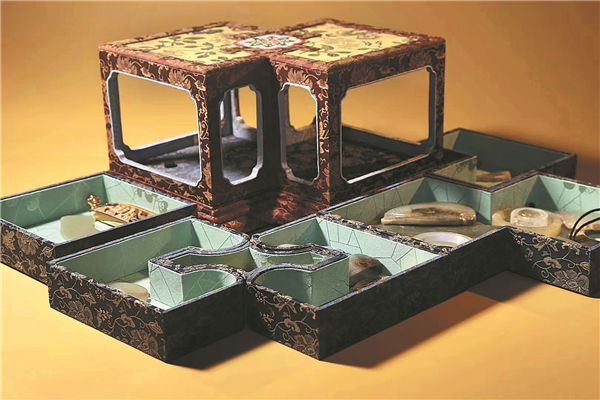

Craftsman maintains and innovates intricate ancient packaging technique, reports Yang Feiyue.
During the Warring States Period (475-221 BC), a man from the State of Chu went to great lengths to make a jewelry box out of magnolia to sell a pearl.
He smoked the small receptacle with spices to give it a lasting fragrance and added exquisite ornamental pearls and jade. So effective were his embellishments that when he sold the boxed pearl, the customer returned the content and just kept the box.
The proverbial tale by Chinese philosopher Han Fei, who lived in the third century BC, has been open to many interpretations, one of the most popular being about bad choices and failure to recognize what's more important.
However, it shed light on the act of packaging valuables in beautifully crafted wooden boxes, a craft that appeared in ancient times.
With the vigorous development of textiles and paper manufacture during the Song Dynasty (960-1279), paper boxes came into being. They were favored by the literati for their simple yet beautiful and elegant characteristics.
This type of paper box is made of grass cardboard, with the outside being framed with Song brocade featuring gorgeous colors and a soft texture. The inside is lined with cotton to make a rich, soft pocket, which was originally used to carry fragile items, such as inkstones and ink ingots, and later thread-bound books.
The art form continued to flourish throughout the Ming (1368-1644) and Qing (1644-1911) dynasties, and manifested itself in various shapes and sizes, from jewelry boxes and cabinets, to royal goods and gifts given by dignitaries. The Qing court even brought together artisans in the trade to make such packages.
Today, in Hedong district, North China's Tianjin, Gao Fuhao has committed himself to carrying on this ancient craft, which was named a national intangible cultural heritage in 2021.
"In a narrow sense, the craft is about making a set of packages for cultural and playful items, which are commonly known as 'brocade boxes'," says Gao, adding that the main purpose is to protect the contents from bumps and prolonged exposure to the external environment.
"In a broad sense, it is beyond just the production of outer packaging and involves a certain level of cultural relics protection and repair, similar to the business of the workshops at the royal palace in ancient times," he says.